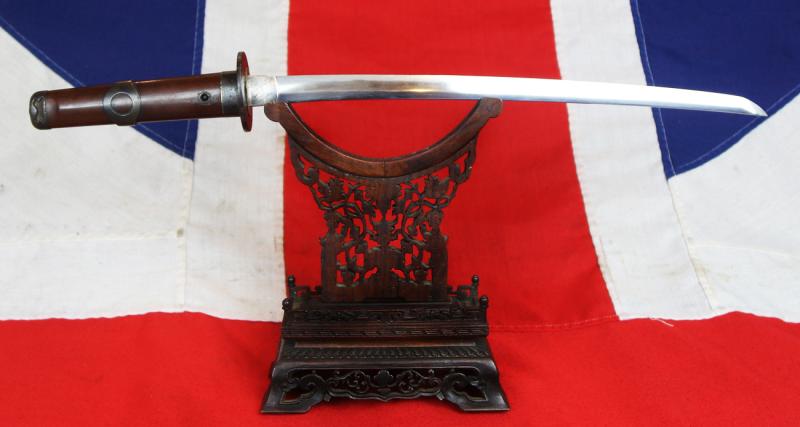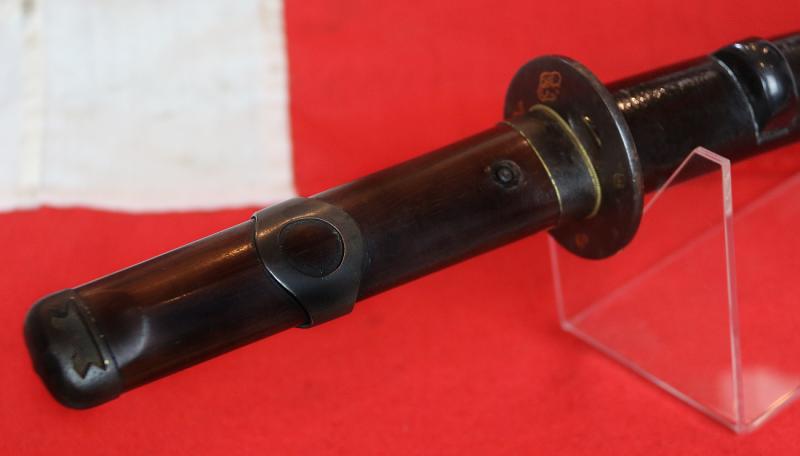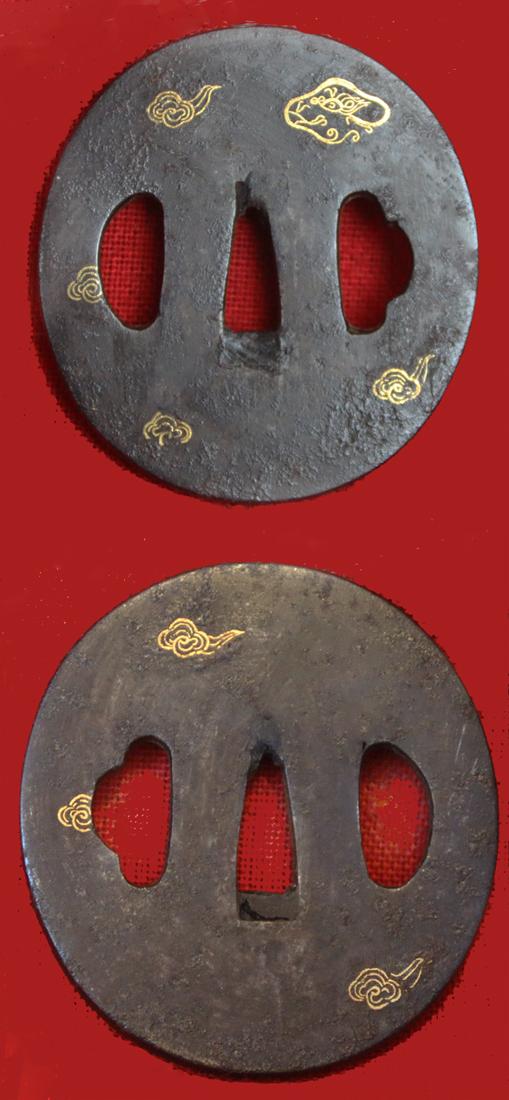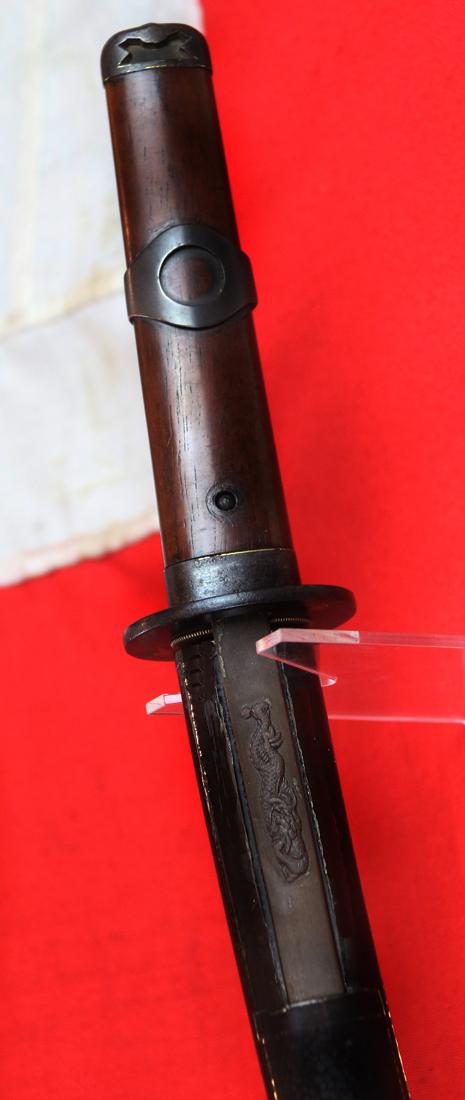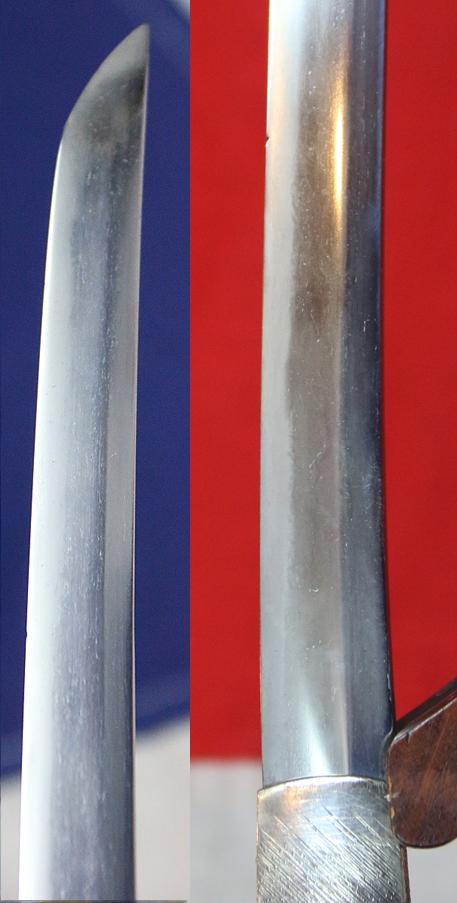A Ko Wakizashi, or Long Sunobi Tanto, Signed Blade Shinto Period Circa 1650
All original Edo mounts and a most fine and elegant blade with notare based on suguha hamon, signed, possibly Norishige, but the kanji are somewhat difficult to interpret, 15.5 inch blade measured from tsuba to tip.
Suite of matching koshirae mounts in tetsu with the tsuba gold inlaid with a stylized dragon and clouds, similary in laid in the sayajiri and saya band inlaid, with a black stippled erushi lacquer, and a carved wood tsuka. The kozuka is a takebori dragon on the plain tetsu ground, the blade is carved wood. The blade has a fine silver foiled habaki engraved with oblique raindrop pattern.
Sunobi Tanto
The Tanto that varied from the traditional size were called Sunobi-Tanto or O-Tanto. These were larger versions of the Tanto which featured blades usually measuring between 13 to 14 inches long. It was close to the size of the Ko-Wakizashi, which is a shorter version of the Wakizashi. However as this blade is even longer that the usual 14 inches, that is why it can be considered as a transitional weapon that has a foot in both camps so to speak. Because of its often small size, the Samurai warriors were able to conceal the Tanto in their clothing. It was also the Shoto or small sword in the Daisho and was paired with the Tachi. This was before the Samurai chose to use the Wakizashi over the Tanto as an auxiliary sword.
The Wakizashi was a Samurai warrior’s backup weapon that was used for close-quarter battles. Aside from this, the sword was a Samurai warrior’s tool for beheading a defeated opponent. It was sometimes used for committing Seppuku, a ritualistic suicide.
In addition, the Wakizashi was one of the few short swords available to the Samurai warrior. Another sword they might use was called a Chisa Katana, effectively a short Katana perfect for use within buildings castles etc. and the prerogative of the personal full time bodyguard of a Daimyo lord, who were the usually the only samurai permitted to be armed in his presence day and night.
Because the sword was the main battle weapon of Japan's knightly man-at-arms (although spears and bows were also carried), an entire martial art grew up around learning how to use it. This was kenjutsu, the art of sword fighting, or kendo in its modern, non-warlike incarnation. The importance of studying kenjutsu and the other martial arts such as kyujutsu, the art of the bow, was so critical to the samurai a very real matter of life or death that Miyamoto Musashi, most renowned of all swordsmen, warned in his classic The Book of Five Rings: The science of martial arts for warriors requires construction of various weapons and understanding the properties of the weapons. A member of a warrior family who does not learn to use weapons and understand the specific advantages of each weapon would seem to be somewhat uncultivated. European knights and Japanese samurai have some interesting similarities. Both groups rode horses and wore armour. Both came from a wealthy upper class. And both were trained to follow strict codes of moral behaviour. In Europe, these ideals were called chivalry; the samurai code was called Bushido, "the way of the warrior." The rules of chivalry and Bushido both emphasize honour, self-control, loyalty, bravery, and military training
Code: 24350
3995.00 GBP


